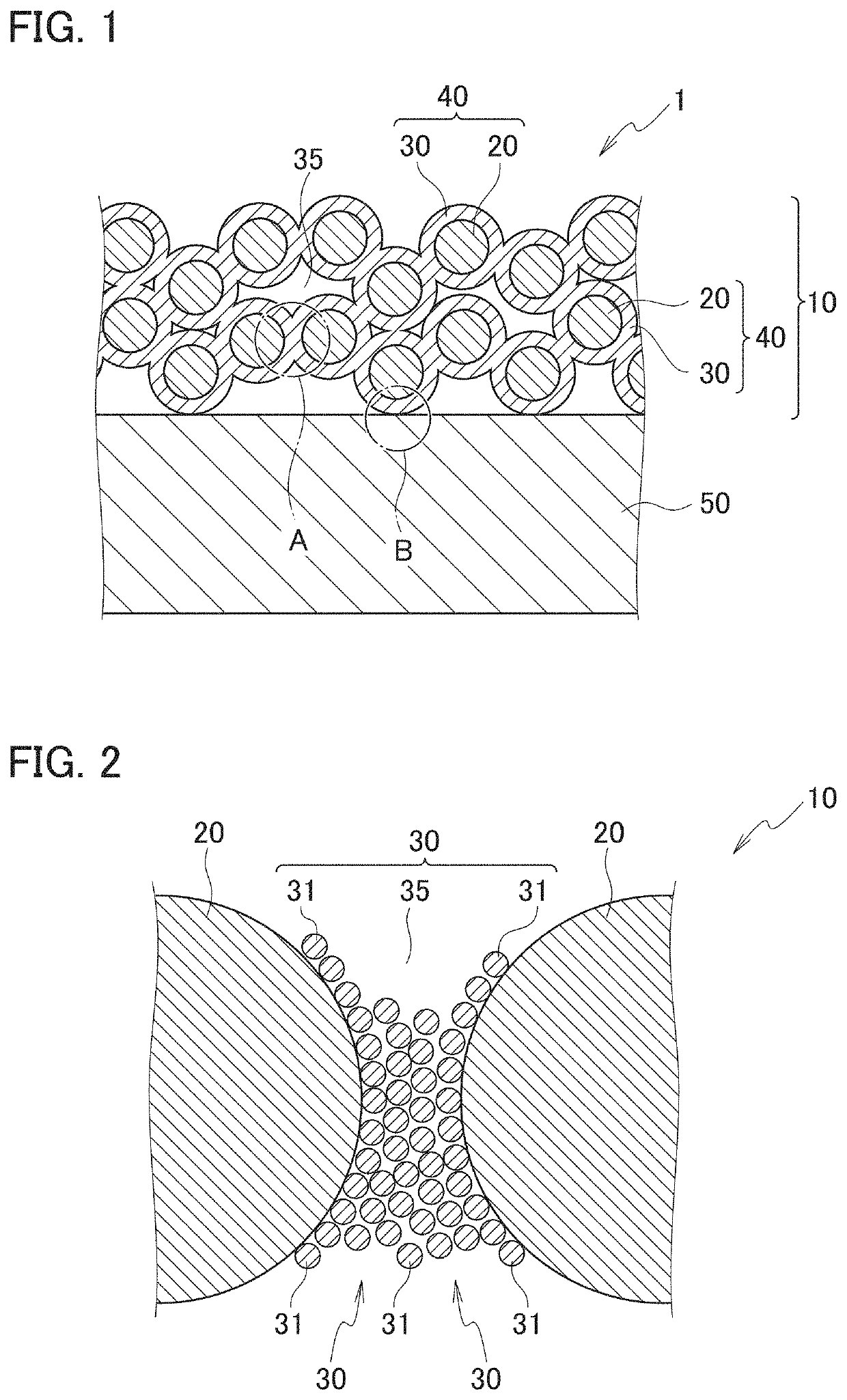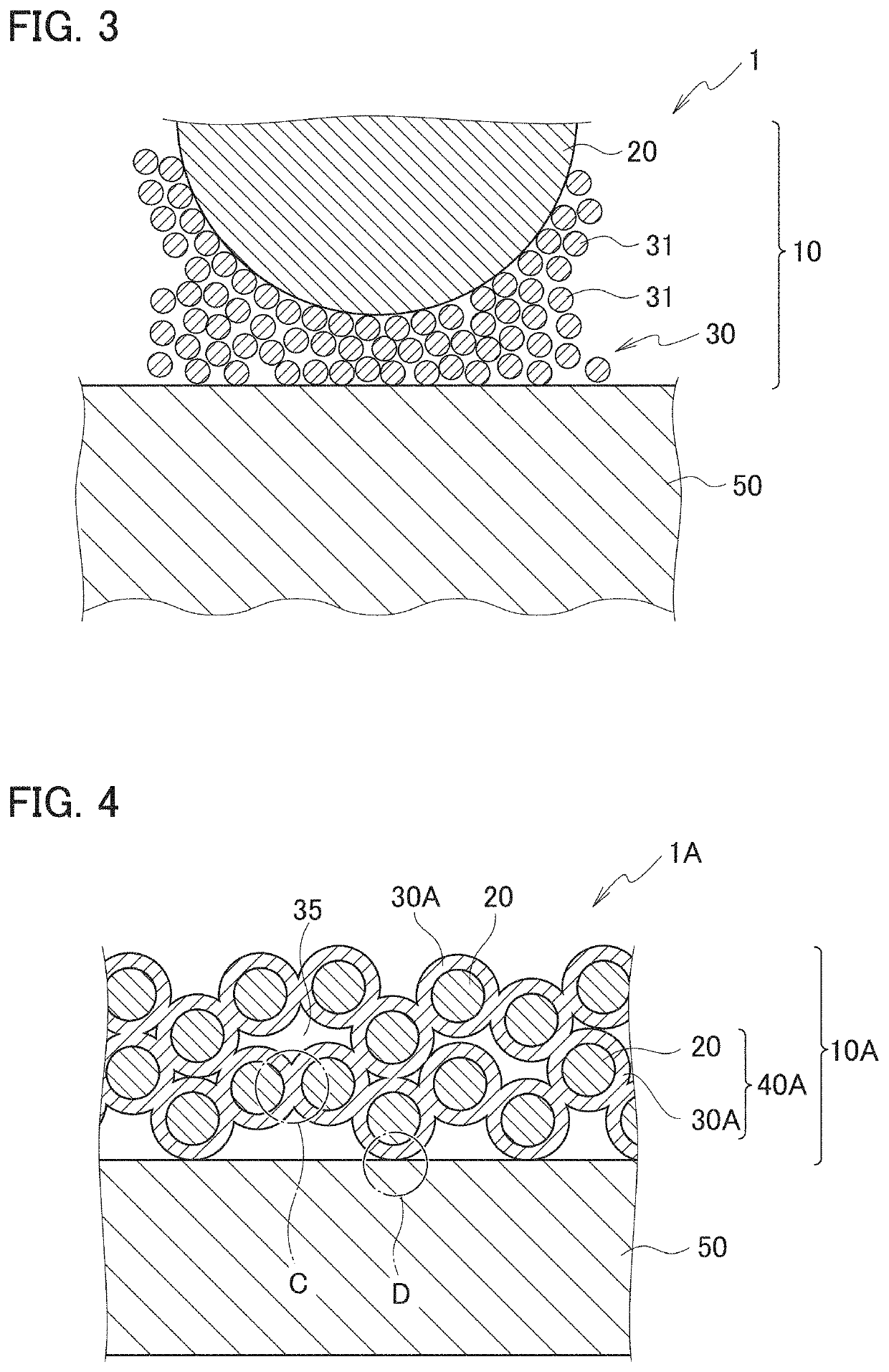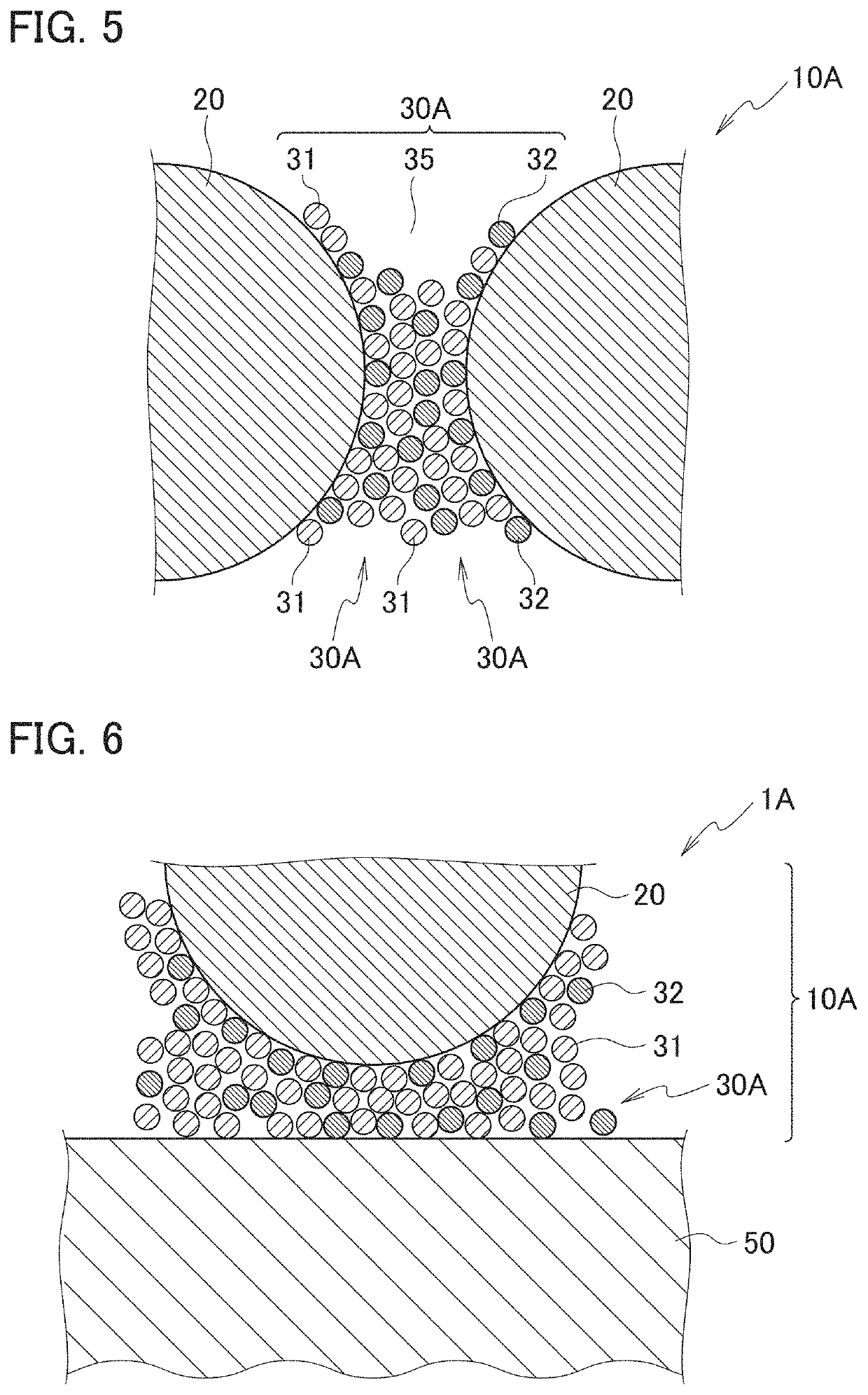Wavelength conversion member
a technology of wavelength conversion and wavelength member, which is applied in the direction of luminescent compositions, coatings, chemistry apparatus and processes, etc., can solve the problems of low light output low heat resistance and heat dissipation efficiency of organic binder such as silicon resin, and low heat resistance and heat dissipation efficiency of wavelength conversion member, etc., to achieve high heat dissipation, high heat resistance and heat dissipation, and high heat resistan
- Summary
- Abstract
- Description
- Claims
- Application Information
AI Technical Summary
Benefits of technology
Problems solved by technology
Method used
Image
Examples
first embodiment
[0023]FIG. 1 is a schematic cross-sectional view of a wavelength conversion member according to a first embodiment. A wavelength conversion member 1 according to the first embodiment is an embodiment in which the binder layer 30 is a nanoparticle-fixed body.
[0024]As shown in FIG. 1, the wavelength conversion member 1 according to the first embodiment includes: a substrate 50; and a wavelength converter 10 that converts color of incident light, the wavelength converter 10 being provided on a surface of the substrate 50. Moreover, the wavelength converter 10 has: inorganic phosphor particles 20 which convert the color of the incident light; and the binder layer 30 that fixes the inorganic phosphor particles 20 to one another. The substrate 50 and the wavelength converter 10 are fixed to each other by the binder layer 30 of the wavelength converter 10.
[0025]The substrate 50 is a substrate that supports the wavelength converter 10. The substrate 50 adheres to the wavelength converter 10...
second embodiment
[0076]FIG. 4 is a schematic cross-sectional view of a wavelength conversion member according to a second embodiment. A wavelength conversion member 1A according to the second embodiment is an embodiment in which the binder layer 30 is a nanoparticle-fixed body. A wavelength conversion member 1A shown as the second embodiment in FIG. 4 is a member in which a wavelength converter 10A is substituted for the wavelength converter 10 of the wavelength conversion member 1 shown as the first embodiment in FIG. 1. The wavelength conversion member 1A has the same configuration as that of the wavelength conversion member 1 except for the above. Moreover, the wavelength converter 10A of the second embodiment is a converter in which a binder layer 30A and a nanoparticle-covered phosphor particles 40A are substituted respectively for the binder layer 30 and nanoparticle-covered phosphor particles 40 of the wavelength converter 10 of the first embodiment. The wavelength converter 10A has the same ...
third embodiment
[0085]A wavelength conversion member according to a third embodiment is a member in which the binder layer 30A composed of the nanoparticle-fixed body of the wavelength conversion member 1A according to the second embodiment is composed of a body other than the nanoparticle-fixed body. Specifically, a binder layer of a wavelength conversion member according to the third embodiment is composed of a bulk body containing at least one type of the metal oxide with a melting point of 800° C. or less. Here, the bulk body means a bulk substance containing at least one type of the metal oxide with a melting point of 800° C. or less, the bulk substance having a form other than that of the nanoparticle-fixed body.
[0086]As the bulk body, for example, there are used a polycrystal made of crystal grains larger than the nanoparticles, an amorphous body, and the like. Here, the crystal grains larger than the nanoparticles mean crystal grains with an average particle size D50 of 100 nm or more. The ...
PUM
| Property | Measurement | Unit |
|---|---|---|
| thermal conductivity | aaaaa | aaaaa |
| temperature | aaaaa | aaaaa |
| particle size D50 | aaaaa | aaaaa |
Abstract
Description
Claims
Application Information
 Login to View More
Login to View More - R&D
- Intellectual Property
- Life Sciences
- Materials
- Tech Scout
- Unparalleled Data Quality
- Higher Quality Content
- 60% Fewer Hallucinations
Browse by: Latest US Patents, China's latest patents, Technical Efficacy Thesaurus, Application Domain, Technology Topic, Popular Technical Reports.
© 2025 PatSnap. All rights reserved.Legal|Privacy policy|Modern Slavery Act Transparency Statement|Sitemap|About US| Contact US: help@patsnap.com



